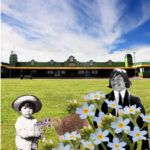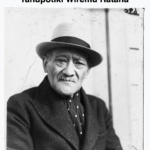29 January 2023 | Blog
ラータナは日本が蘇り、力ある国になった時、自分達マオリを忘れないで欲しいと言い残し、銀貨の表側にある二つの一重咲きの桜を勿忘草の花だと示したと言う。Nāreira nā konei a Rātana ka inoi ake ina ara ake a Tiapani i ngā puehutanga, ā, kātahi ka mana nui, kia kaua rawa e wareware ki te iwi māori. Nāna nei hoki ngā puapua pū e rua i tautuhi i te taha nui o te moni hriiwa hei putiputi ‘kaua e wareware ki au’. Rātana then asked that when Japan rose from the ashes and became a powerful nation, to not to forget the Maori people. He thus indicated that the two single blossoms on the front side of the silver coin were the flowers of the forget-me-not.
1 January 2023 | Blog
アオテアロア・ニュージーランド北島南部で生まれ育った農夫、タフポティキ・ウィレム・ラータナ(Tahupōtiki Wiremu Rātana / T.W.ラータナ 1873-1939年)は1918年に聖霊訪問を受け、信仰ヒーラーとして広く知られるようになった。Tahupōtiki Wiremu Rātana (T.W. Rātana 1873-1939), a farmer born and raised in the southern region of the North Island of Aotearoa New Zealand, was visited by the Holy Spirit in 1918 and became widely known as a faith healer.
1 January 2023 | Blog
ニュージーランドのマオリ文化に触れるアオテアロア観光旅行でマオリ独特の文化に触れた日本人も多いでしょう。しかしT.W. ラータナが行った『ラータナ・ムーヴメント』や『ラータナ教団』のことは、日本人には余り知られていないと思います。
Although there are many opportunities to encounter Māori culture through sightseeing trips to Aotearoa New Zealand, little is known about T.W. Rātana, the Rātana Movement or the Rātana Church. I thought I would like to listen to the stories of the Rātana pa residents and introduce those stories to the people of Japan.



